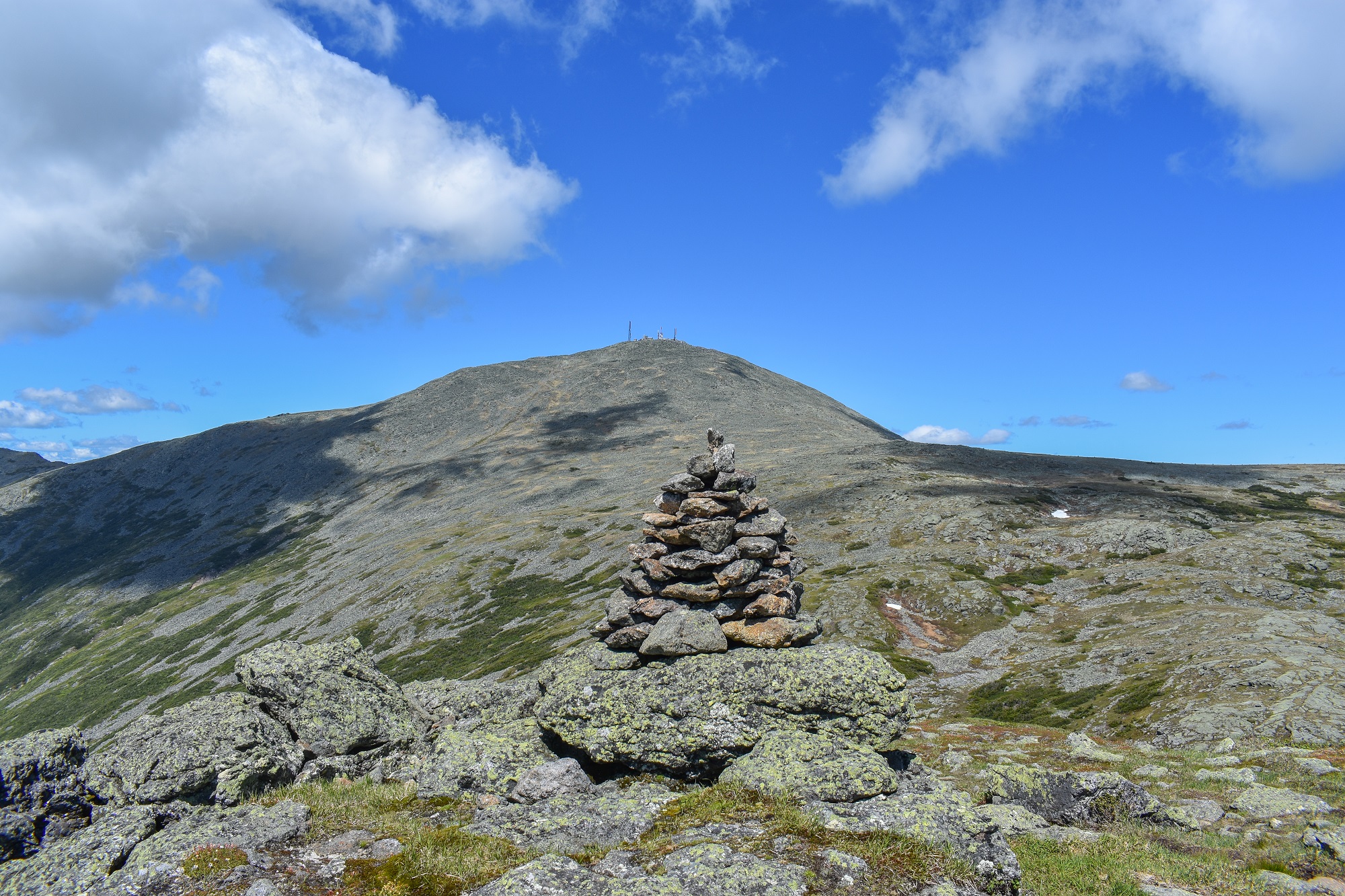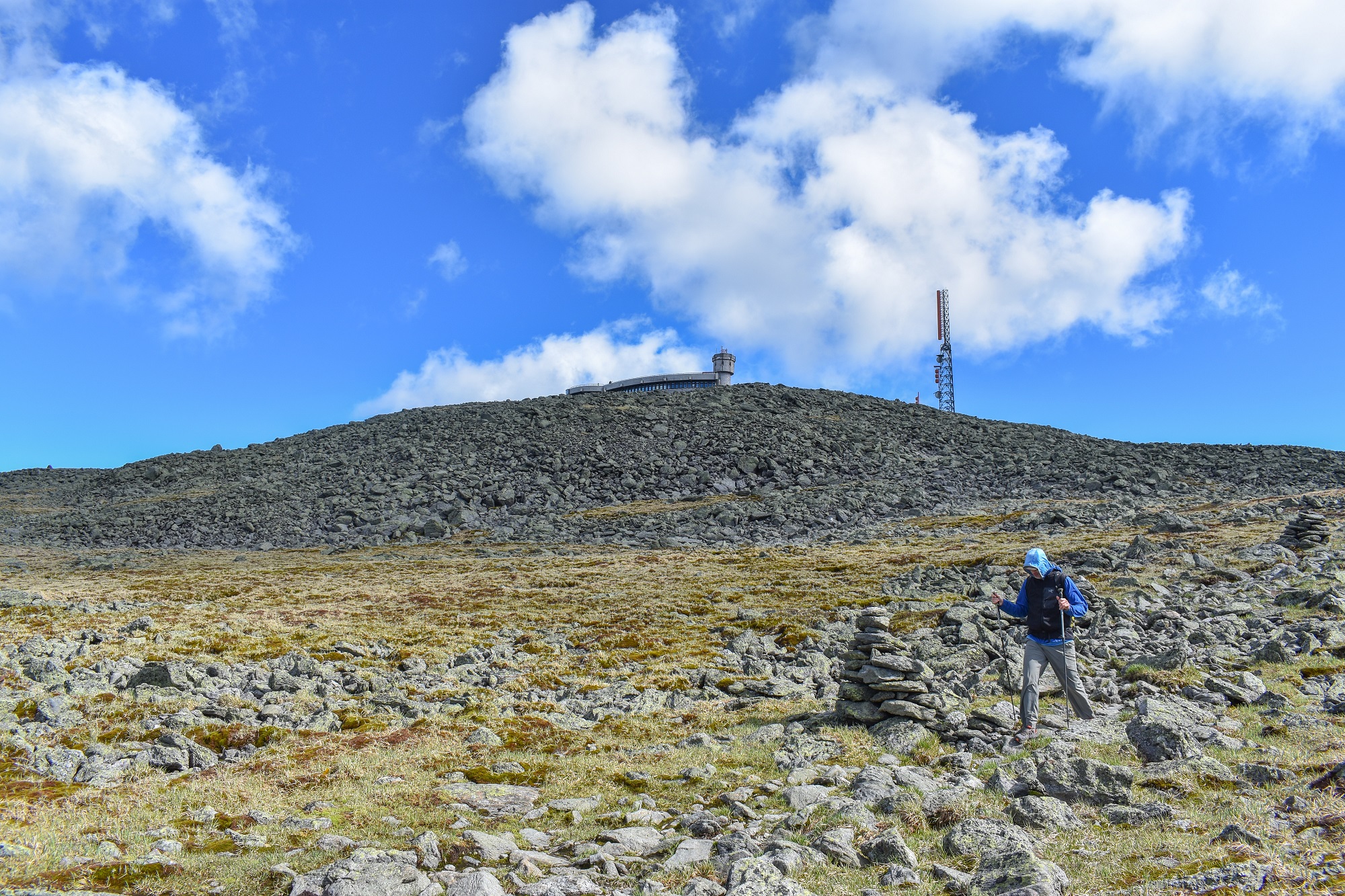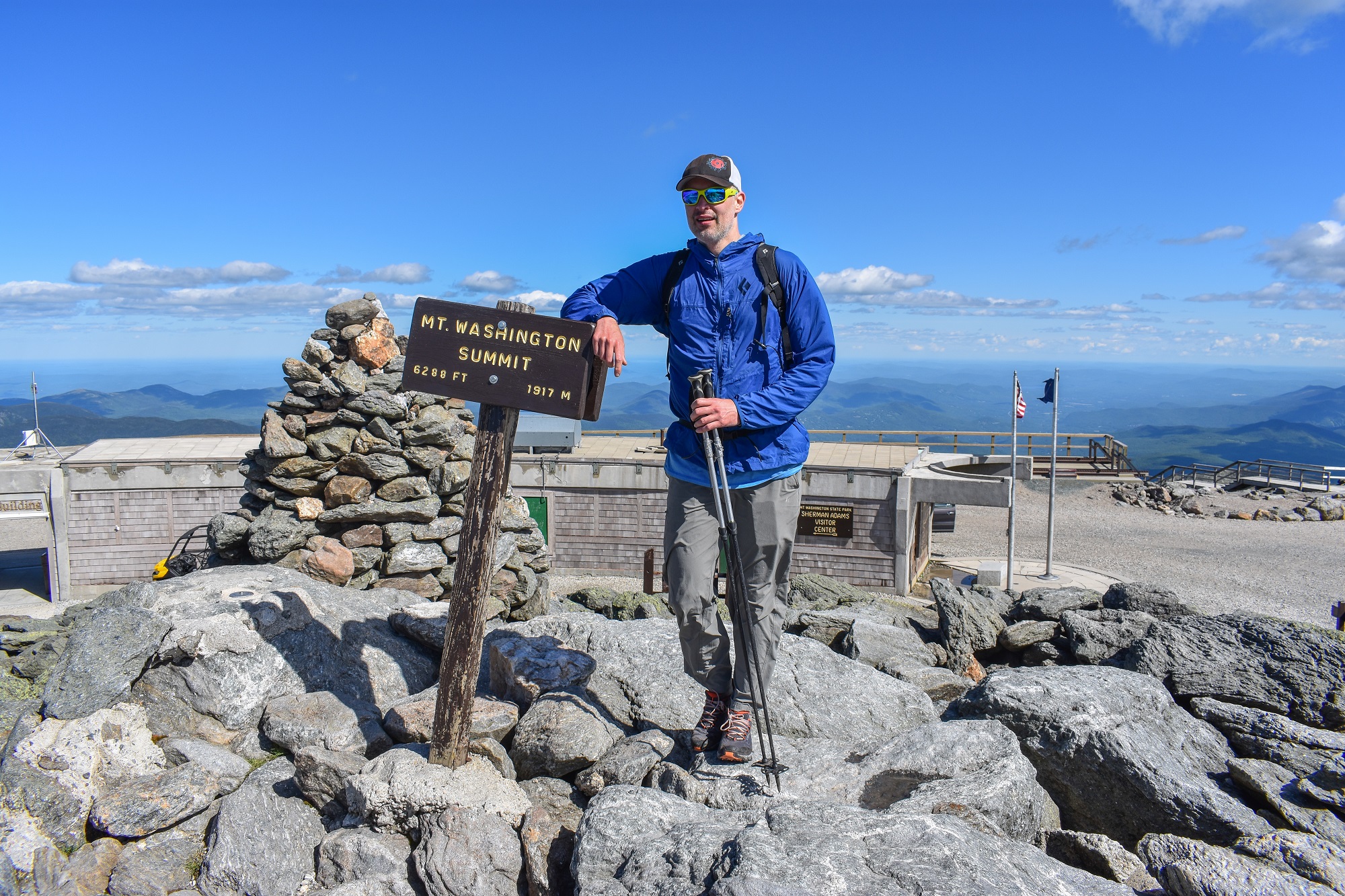Seek the Peak, one of the Northeast’s largest and most popular annual outdoor events, is rapidly approaching. On July 15, 2023, hikers from across the country will be ascending trails throughout the White Mountains to raise money for the Mount Washington Observatory. While participants can tackle any hike, year after year Mount Washington and the other high peaks in the Whites are top objectives. To ensure that your Seek the Peak adventure is safe, comfortable, and enjoyable, below is a list of recommended gear that will have you prepared for everything from bluebird skies to chilly drizzle.

The Gear You Need for Seek the Peak
Layers
Quick-drying, wicking layers are the key to staying comfortable when hiking in the Whites. Everyone is different with some preferring shorts and tees, while others opt for pants and long sleeves.
For the upper body, EMS Techwick tees (men’s/women’s) are a tried-and-true hiking layer—they pull perspiration away from your skin to keep you dry and comfortable. They’re also UPF 30+ to protect you from the sun. For even greater protection from the sun’s rays, consider wearing a sun hoody like the Cotopaxi Sombra Sun Hoodie (men’s/women’s).
On the lower body, nylon hiking pants are almost as ubiquitous with the Whites as unpredictable weather and EMS’s Cargo Zip-Off Pants (men’s/women’s) have been helping hikers bag summits for decades. The pants conveniently transform into shorts and eliminate the night-before indecision of what’s appropriate to pack.
And don’t forget that the foundation of a good layering system is performance underwear. So wear skivvies that dry quickly and wick.
Outerwear
When venturing into the Whites, it’s a good idea to prepare for all types of weather—especially considering Mount Washington just had its snowiest June on record, with the mountain receiving more than eight inches of snow in June!
Luckily you can prepare for everything from high wind to pouring rain to frigid temps by packing a few key layers: a wind shirt like the Mountain Hardwear Kor AirShell, a raincoat like the EMS Thunderhead, and a puffy coat like the EMS Featherpack Hooded Jacket (men’s/women’s).
If the weather looks wet, consider packing a pair of rain pants like the EMS Thunderhead Peak (men’s/women’s); they’re nice to have in the event of a downpour.

Accessories
Because of the uncertain nature of White Mountain weather, it’s a smart strategy to plan for everything, which is why you’ll want to pack a winter hat, a pair of gloves, and a buff. These simple but critical accessories can make the difference between comfortably kicking back and enjoying a summit and rushing back to the protection of the treeline.
The relatively low-tech trucker hat is also an awesome hiking companion. Like a reverse mullet, trucker hats are all business in the back, providing excellent venting while working hard (like when hiking uphill), and party in the front, letting you share your favorite brand or message.
Emergency Gear
Hikers heading into the mountains should plan on being self-sufficient, even in the case of an emergency. A headlamp is a good insurance policy against a hike taking longer than expected, while a minimalist first-aid kit can help you treat minor injuries. The Sawyer Mini Filter weighs next to nothing, takes up minimal space, and makes creating safe-to-drink water easy. In the event of a serious accident, an emergency bivy can literally be a lifesaver while you wait for help to arrive.

Pack
It may seem like a fair amount of stuff to carry on a hike of a high White Mountain summit, but it should all fit in a pack between 20 and 30 liters—the Osprey Talon/Tempest backpacks have a number of options in the range. It’s tempting to choose a bigger bag, but keep in mind that most of us feel the need to fill that extra space, resulting in heavier loads, longer days, and maybe even missed summits.
Footwear
Hikers in the White Mountains sport a wide variety of footwear, ranging from traditional full-leather boots to trail runners. While everyone has an opinion on what’s best to hike in, make sure that whatever shoes you choose have sufficient life left in them (no super-worn soles) and are ones you’ve already logged some miles in. It would be a bummer to get blisters because of untested footwear just a few miles into your big hike.
Increase the comfort of your feet and lower the chances of getting hot spots by choosing fast-drying socks that move moisture away from your skin and provide some padding. There are a ton of options available, but you can’t go wrong with a pair from Smartwool.
Trekking Poles
There are numerous reasons for hiking with trekking poles, including improved stability and reduced stress on your body. In other words, they help prevent your Seek the Peak from being derailed by injury or fatigue. EMS offers a trekking pole within the price range of nearly every hiker and has both carbon and aluminum options.

Final Thoughts On Seek the Peak
The aforementioned items are just some of the things you should think about in advance of Seek the Peak. For example, you’ll also need food and water to fuel your hike and it’s smart to watch the weather in advance of the event. Don’t trust the weather app on your phone; the higher summits forecast from the Mount Washington Observatory provides a much more accurate forecast for the mountains.
In the end, Seek the Peak is an awesome event that supports an excellent cause, and is a great excuse to get outside and into the mountains. Make the most of your Seek the Peak adventure by properly preparing and having the right gear, and we’ll see you at the après party on July 15th!
Want to join Team EMS for the hike? We’re currently looking for team members!
Tim Peck and Doug Martland
Tim and Doug met long ago at the Eastern Mountain Sports in Canton, Massachusetts. Bonding over a love of slick Quincy Quarry granite, White Mountain sufferfests, and scheming up adventures while folding tee-shirts, today Tim and Doug collaborate to write about their favorite outdoor activities and occasionally get nostalgic about tee-shirt tables.




